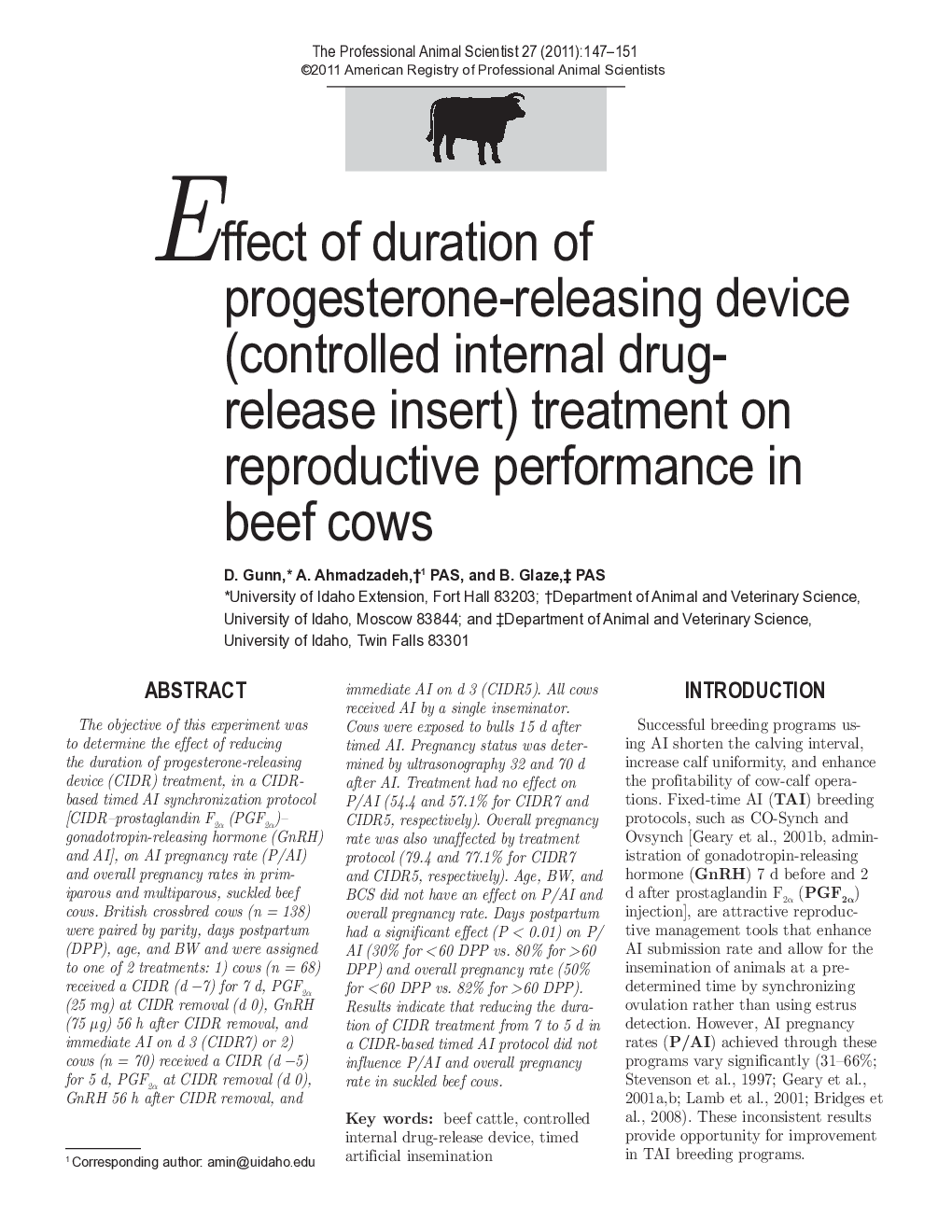| Article ID | Journal | Published Year | Pages | File Type |
|---|---|---|---|---|
| 2454145 | The Professional Animal Scientist | 2011 | 5 Pages |
Abstract
The objective of this experiment was to determine the effect of reducing the duration of progesterone-releasing device (CIDR) treatment, in a CIDR-based timed AI synchronization protocol [CIDR-prostaglandin F2α (PGF2α)- gonadotropin-releasing hormone (GnRH) and AI], on AI pregnancy rate (P/AI) and overall pregnancy rates in primiparous and multiparous, suckled beef cows. British crossbred cows (n = 138) were paired by parity, days postpartum (DPP), age, and BW and were assigned to one of 2 treatments: 1) cows (n = 68) received a CIDR (d -7) for 7 d, PGF2α (25 mg) at CIDR removal (d 0), GnRH (75 μg) 56 h after CIDR removal, and immediate AI on d 3 (CIDR7) or 2) cows (n = 70) received a CIDR (d -5) for 5 d, PGF2α at CIDR removal (d 0), GnRH 56 h after CIDR removal, and immediate AI on d 3 (CIDR5). All cows received AI by a single inseminator. Cows were exposed to bulls 15 d after timed AI. Pregnancy status was determined by ultrasonography 32 and 70 d after AI. Treatment had no effect on P/AI (54.4 and 57.1% for CIDR7 and CIDR5, respectively). Overall pregnancy rate was also unaffected by treatment protocol (79.4 and 77.1% for CIDR7 and CIDR5, respectively). Age, BW, and BCS did not have an effect on P/AI and overall pregnancy rate. Days postpartum had a significant effect (P < 0.01) on P/ AI (30% for < 60 DPP vs. 80% for > 60 DPP) and overall pregnancy rate (50% for < 60 DPP vs. 82% for > 60 DPP). Results indicate that reducing the duration of CIDR treatment from 7 to 5 d in a CIDR-based timed AI protocol did not influence P/AI and overall pregnancy rate in suckled beef cows.
Related Topics
Life Sciences
Agricultural and Biological Sciences
Animal Science and Zoology
Authors
D. Gunn, A. PAS, B. PAS,
